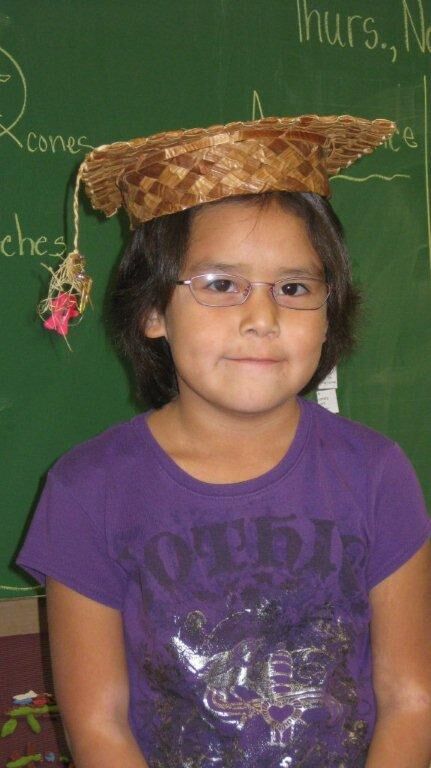Classrooms right across our country are filled with the sounds of children engaged in structured and thoughtful talk. Educators realize that talking not only helps to develop their students’ literacy skills but it is also a critical part of learning in all subject areas. Various types of talk (structured partner talk, social conversation, drama or role-playing talk, rehearsed presentations, etc.) can be utilized in the classroom depending on the targeted goals, the content area, the activity, and the age and experience of the children.
The following activity provides a unique opportunity for students to speak in front of an audience with the benefit of planning and rehearsing ahead of time. “News Clues” is a popular assignment amongst younger students and is a springboard for several extension activities.
NEWS CLUES
Setting the Criteria for Speaking and Listening
The first step in establishing the ground rules for News Clues, or any kind of structured talk, is to develop the criteria for what the speaker’s and the listener’s roles will be. We practise speaking for several weeks before starting the News Clues routine. The criteria may look something like this.
GOOD SPEAKERS
- speak clearly
- speak with appropriate volume
- speak with expression
- hold their bodies still (no fidgeting)
- face the audience
- are accurate
- acknowledge their structured talking partner when needed
GOOD LISTENERS
On the inside
- make connections
- ask questions
- visualize
- make inferences
- sometimes get new thoughts or ideas
- summarize
- remember important details
On the outside
- make eye contact with the speaker
- face the speaker
- use appropriate body language
- say something appropriate: ask a question, compliment or agree with the speaker
Setting the Criteria for News Clues
News Clues is a weekly homework assignment that requires each child to choose an item from home to share with the class. The item is to stay hidden from view as the child reads three clues s/he has prepared in advance. The clues are printed in a half and half notebook that is dedicated to this assignment. A picture of the item is to be drawn, labeled and coloured on the blank half of the page.

The criteria for this part of the assignment is typed up and pasted into the front cover of the notebook for the student and the parent/caregiver to refer to.
Your News Clues Day is ____________________________________________
Choose an item and put it in a bag to bring to school on your News Clues Day. Remember to keep it a secret so that your friends can try to guess what it is. You may choose:
- Something from nature.
- Something that you made.
- A painting or a drawing that you made yourself.
- Something to do with our classroom theme.
- You may bring a toy, or something that is special to you, the week after the Christmas break or the week of your birthday.
Neatly print the date on the second blue line on a page in this notebook. Print three clues that tell about your item. Make sure that you use complete sentences. Print the answer to your clues at the bottom of the page. Draw, label and colour the picture in the blank space at the top of the paper. Finally, make sure that your parent signs the page before you put the book into the plastic bag to bring back to school.
 Modelling the News Clues Routine
Modelling the News Clues Routine
For several weeks before the students begin presenting their own News Clues, I model the routine for them. As the presentations happen during the lunch break I wait for them to settle with their lunches and to direct their attention to me (we call this “waiting for the audience”). Once the focus is attained, I lead off with “Good morning Division __ I have three clues for you today. The first one is…The second one is… The third one is… Hands up if you have a guess.” A total of three guesses is allowed before the item is revealed and put on display. During the time that I am modeling the routines I include items from each of the five categories listed in the criteria.
Establishing the News Clues Routine
The week before the students begin their own presentations, I give them their News Clues Books. We choose an item from the classroom and practise the written format together. Each child is then assigned a day of the week to make a presentation and they are ready to begin!
Extension Activities
Tallies and Graphs
An easy way to keep the students focused on the criteria for choosing an item is to tally and graph the items. We keep a piece of chart paper with the following headings pinned to the bulletin board: something from nature, something from our theme, something I made, Christmas and birthdays. As the students finish their presentations they place a tally mark on the chart under the correct heading (sometimes an item will fit more than one). At the end of each week a circle or bar graph could be made from the data.
Museum Collection
Many of the items the children bring (calendars, models, posters, postcards, stuffed toys, pictures, T-shirts, books, games, puzzles, etc.) connect to the current theme we are working on. Setting up a display area for these items provides an extra point of interest.
ABOUT THE AUTHOR
Brenda Boreham
Brenda has been teaching for over 30 years. She uses literature based themes in her classroom and is actively involved in her school and district literacy committees.
This article is from Canadian Teacher Magazine’s May/June 2011 issue.











